German fortifications of the Great Patriotic War
 German fortifications of the Great Patriotic War
German fortifications of the Great Patriotic WarFinale
Having read the article "German mobile firing point",
I became interested in the types and designs of field fortifications (FS),
used by the Nazis to defend their borders from the Soviet troops in the days of the Great Patriotic War (WWII).
The article strongly provoked me, I began to look for additional information, found one, and, based on my modest possibilities, I tried to create a brief overview of the evolution of the forms of field fortification equipment (FO) of the German troops.
By and large, this is a republishment of a rare, in my opinion, material ... And my debut in the Military Review.
During the years of the Great Patriotic War, the methods of the FD of the area were modified by the Germans in accordance with the general course of military operations. There are four main periods:
The first period
It refers to the beginning of the war, when the Germans, inspired by the temporary success gained as a result of using the advantages of surprise attack, proceeding from their theory of the “Lightning War”, did not attach importance to the issues of strengthening the terrain.
Defensive measures were limited mainly to the creation of outposts around settlements, railway stations and communications nodes. Basically, these activities were designed to protect communications from possible attacks by our troops and to fight partisans.
Second period
The beginning of the second period, in the development of field fortifications of the Germans, can be considered the rout of their troops near Moscow (winter 1941-1942).
Having learned the powerful offensive strikes of the Soviet troops, the Germans began to pay more attention to strengthening the area.
From individual systems of post-outposts they moved to a developed system of strong points and defense units.
The defensive lines consisted of a chain of reinforced defense units and strongholds, saddling commanding heights, mostly grouped around settlements and located at a distance from 2 to 4 km from each other.
The gaps were filled with machine-gun and rifle trenches and separate fire installations.
The defense units and strongholds of the German defense consisted of 1-2 lines of trenches and lines of communication, with cells and platforms prepared in large numbers for all types of fire weapons, observation posts, as well as shelters, shelters and dugouts for soldiers and officers.
All the strongholds were connected with each other by a well-developed network of roads - radial and rokadnyh, providing the possibility of a wide maneuver and the transfer of reserves from the depth of defense.
Such a system of building defense, with clearly defined strong points and poorly protected intervals, could not withstand the powerful blows of the Soviet Army with its tactics of deep detours and scope.
The third period
Characterized by the widespread transition of the Germans to the defense (1943 g.).
The victory of the Soviet troops in the battle of Kursk knocked out their last bet on the success of offensive operations. The Germans built their defense on a well-designed, well-organized system of fire of all kinds. weapons, infantry combat formations, located with a concentration on tactically important commanders of areas of the terrain and on the active operations of reserves.
The engineering and fortification support of the defense mainly consisted of ensuring the tactical survivability of fire weapons, the reliability of the fire system, mainly in front of the front edge and on the flanks, shelters of manpower and materiel, speed of maneuver with reserves and armament.
The front edge of the line, as a rule, was provided by a continuous trench of the most richly equipped fire facilities, in the form of the simplest open fire sites.
Behind the first on the tactically more important areas were located the second, third, and sometimes even the fourth line of trenches.
The condensed system of trenches, with the equipment of their various kinds of fortifications, was mainly strongholds.
Unfortified gaps between the support points, as a rule, was not.
The concept of a stronghold, with the Germans strengthening the trench system, was to some extent conditional and not rigidly fixed on the ground, since the possibility of easy development of the trench system at any point of the line and its rapid occupation with one or another element of the battle formation led to changes in the shape of the reference point and even to the displacement of its front and depth.
A new stronghold for the trench system for strengthening the terrain could quickly be created where it is needed, due to changes in the combat situation.
Obstacles of various kinds were used by the Germans mainly in front of the front edge of the defense, that is, they were installed in front of the first trench.
The fourth period
Characterized by the retreat of the German troops on all fronts, passing under the increasing strikes of the Soviet Army in flight.
In relation to the fortification equipment of the area, this period is characterized by the fact that the Germans tried to hide behind large natural barriers, behind well-prepared ramparts and to delay the offensive; they quickly strengthened the high banks of large rivers, strengthened the existing long-term boundaries.
The Germans for the most part did not have time to create new frontiers.
Fortification equipment of the area is manifested in all its diversity during the 3 period.
It was then (in 1943) that the Germans most widely used armored machine-gun caps: “Crabs”.
And they were used not only on the Eastern Front.
At least one Crab was captured by the Allied forces during the liberation of Mount Lungo, Italy, on 1944.
Machine gun armor cap "MG - Panzernest" (Crab).
By definition, the Allies - "Mobile Metal Dot."
Weight and size characteristics of MG - Panzernest:
Overall height: 182 cm
Max. Width: 152
Weight: 3 tons
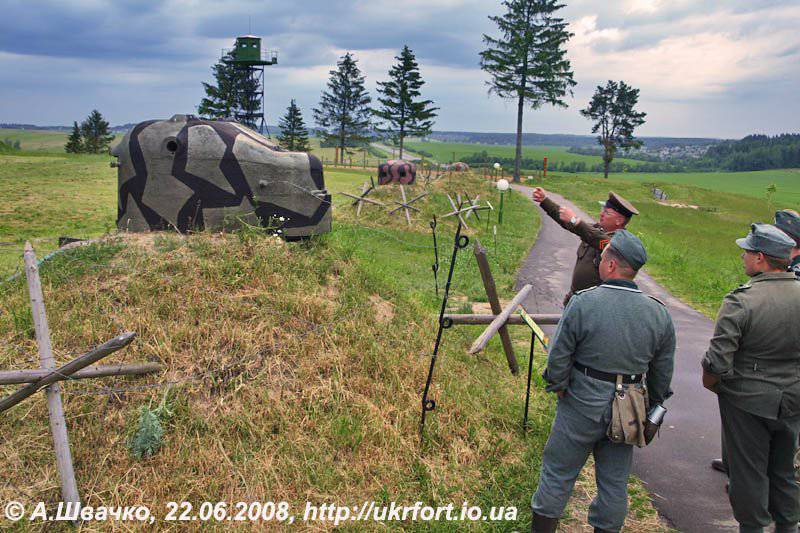
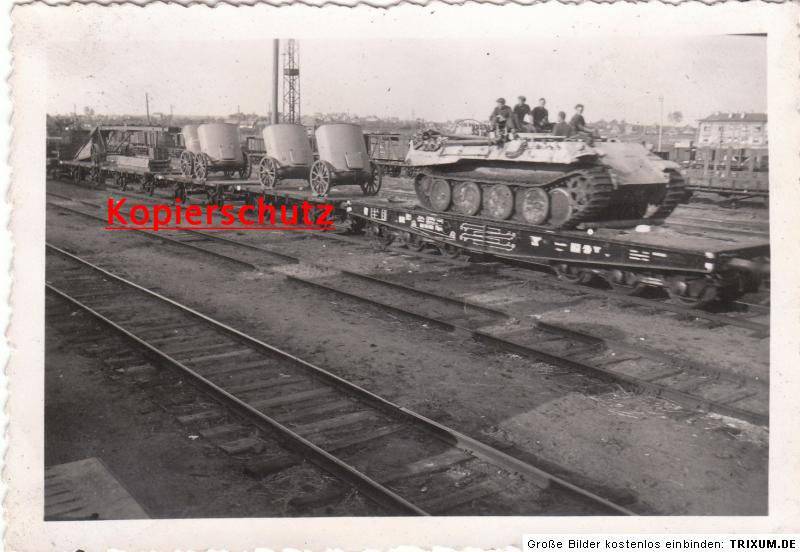
A small excerpt describing Raisin-Barvenkovskuyu offensive operation:
“In July, the 1943 of the year, our regiment supported the 8 th Guards Army when crossing the Seversky Donets River in the area of Izium. I, as the regimental intelligence chief, followed in the first echelon of the attacking rifle subunits, under enemy fire, I ran across the assault bridge to the river.
But the enemy opened strong fire from machine guns, sheltered on the high right bank of the river, our infantry lay down. In addition, the first position of the enemy’s defense was tightly mined, and his aviation continuously bombed our battle formations.
Our artillery fired at machine gun points, but they continued to fire. I noticed one well hidden machine gun.
Caused the fire of one of its batteries. The gaps lay down exactly, the machine gun was silent, but soon again opened a mad fire.
I repeated the fire again. Together with the infantry, I rushed forward. We went to these machine-gun points. It turned out to be an armored cap buried in the ground. Actually, the armored cap rose above the ground on the 40-50 cm, it was a small embrasure, closed armored damper. In the cap was installed large-caliber machine gun and was a machine gunner. Such armored caps were called 'crabs' - that was a new weapon.
The machine gun I fired at was bombarded with earth, so he stopped the fire.
Unfortunately, there was no direct hit on the armored cap.
There were many such machine gun points in this direction, some even lay on the ground - the enemy did not have time to bury them. Therefore, our infantry with great difficulty seized a bridgehead on the right high bank of the Seversky Donets River ”
(Chernyshev E.V.)
Photo by A.P. Troshkina, 03.07.1943
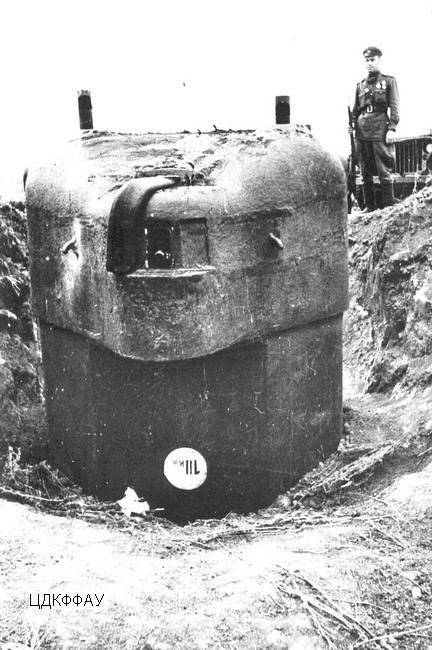
Photo by A.P. Troshkina, 03.07.1943
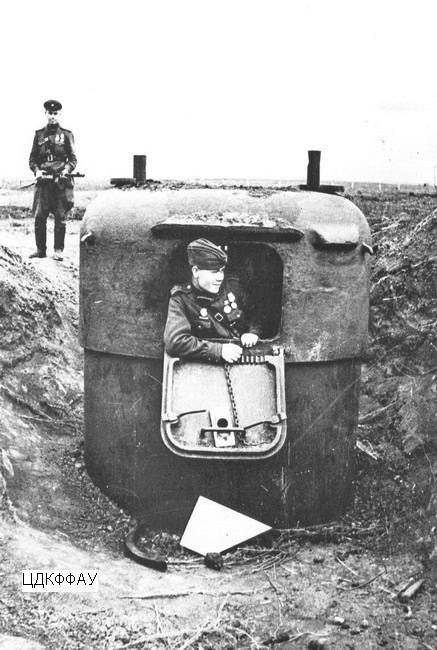
The photo shows that they did not have time to bury him, but simply put him in a funnel dug for him.
MG - Panzernest. Inside view.
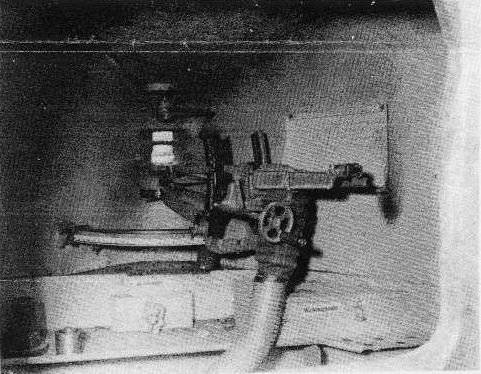
3 September 1943 was published in the Krasnaya Zvezda newspaper and in the Military Engineering Magazine No. 10 for 1943 a description of the German armor cap (crab) was given.
The tests of the original fan and the furnace installed in the armored cap gave a number of interesting data with which it is useful to acquaint the officers of the engineering troops, since the enemy is installing armored caps on all fronts and captured by our troops, they can be successfully used.
The armored machine-gun hood is equipped with exhaust ventilation with mechanical impulses.
Air intake
carried out over the head of the second number through the hole (1), covered with a metal grid (see. Fig.).
Air flows through the duct (2) to the fan and through the duct (3) is discharged through the exhaust port (4) to the outside.
Possible partial discharge of air through the heating chimney.
For this purpose, there is a nozzle (5) connecting the air duct (3) with the blower of the furnace. The nozzle has a valve (6), which regulates the amount of air flowing through the oven, and turns off the oven from the ventilation duct.
In addition to extracting air through the hole (1), air is sucked out of the box with the spent sleeves through a flexible metal hose (7) connecting the box to the ventilation duct (2). The amount of air sucked through the sleeve is approximately 25% of the total amount of air supplied.
Air exhaust
It is carried out by a centrifugal fan (diameter of the suction inlet - 70 mm) with a foot pedal drive.
To ensure shift work of the first and second numbers of machine-gun calculation on the fan there are two pedals.
All ventilation ducts are made of black iron with welding seams; their connection is made on rubber couplings with metal flat clamps and on the flanges.
The tests carried out at the Scientific Testing Engineering Institute showed that the performance of the ventilation system ranges from 200 to 280 m3 / hour with 40 - 70 pedals per minute.
The average nominal number of swings of the fan pedal should be 50 - 60 per minute. The number of swings 80 - 90 per minute should be considered the maximum; at this intensity, continuous operation of no more than 5 minutes is possible.
During continuous operation of the ventilation system, intensive firing from the MG-34 machine gun brings the concentration of carbon monoxide in the casemate to a maximum of 1 mg / l (with the hatch closed and the periscope holes open).
When idle ventilation any intensive shooting from a machine gun is impossible.
Powder gases and gases from burning lubricating shafts that are released during firing quickly fill a small volume of the structure and make the air completely unsuitable for breathing.
This circumstance, by the way, is possible along with the main anti-armor equipment in case of near blocking, it is recommended to close the exhaust vent and furnace (if there is one) of the opening with turf, clay, earth or snow, which is not difficult.
Such an event will not be able to disable the cap, but the intensity of the fire will be reduced to a minimum.
The individual means of chemical protection available in the calculation, with no ventilation, will not be of any great help, since they do not trap carbon monoxide.
Отопление The armored machine-gun hood is carried out by a welded iron furnace, which consists of a firebox, a convection part and a blower.
The furnace is made of sheet iron with a thickness of 1,2 mm with double walls at the firebox; chimney is made of black roofing iron.
The furnace is installed on the legs on special wooden pads and bolted to the bottom of the structure.
Gases from the firebox come into the convection part, there they pass through three shaped tubes and go to the chimney.
Outside, shaped convection tubes are freely washed by air passing through the holes and the grill.
The chimney is discharged through the hole for the axle inserted into the armored cap during transport.
The pipe consists of two elements: the 5 section inside the structure and the 6 section outside.
The furnace furnace is divided with a blower grate made of sheet metal 2 - 3 mm thick with holes 8 - 10 mm; the grate is welded to the walls of the furnace. An asbestos cord is built into the doors of the blower and the firebox along the perimeter of contact with the hole, which ensures the density of the furnace closing.
When ventilation is inactive, the furnace can operate without blowing with an open blowing door, but in this case, due to the small diameter and height of the chimney, the possibility of smoke is not excluded.
When working with blast, with the valve open (6), both oven doors must be carefully closed.
In this case, the relative tightness of the furnace and chimney makes it impossible to smoke the structure.
The presence of the blast under the grate, the design of the grate itself and the height of the bottom of the feed opening above it (17 cm) make it possible to burn a wide variety of fuels (wood, coal, peat) in the furnace.
However, in the instruction manual in order to avoid unmaskingit is recommended to heat the stove with charcoal only.
For the same reasons, it is recommended that the instruction be turned off when firing from a machine gun under the grate.
If there is no need, the stove may not be installed at all; in this case, the hole in the air duct (3) for the nozzle (5) is closed with a screw cap, and the hole in the bell cap, through which the chimney is brought out, is closed with a massive metal plug.
Not only the Germans built and used both portable and capital fortifications.
Here are a few examples:
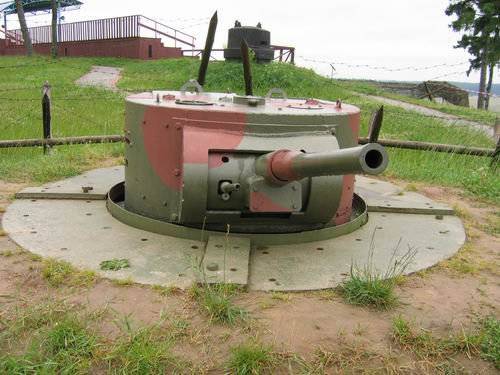
It was originally installed in the fortress Osovets.
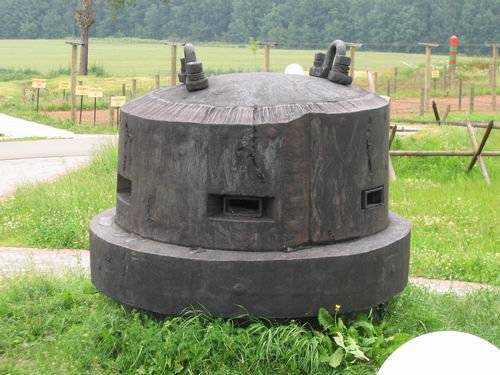
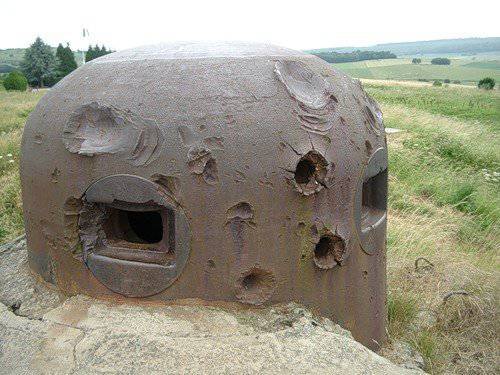
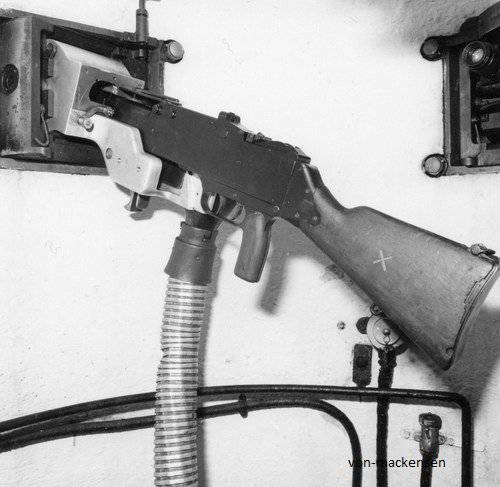
Some scenes were shot there.
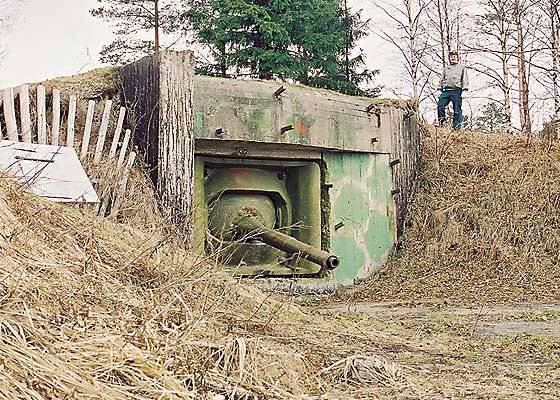
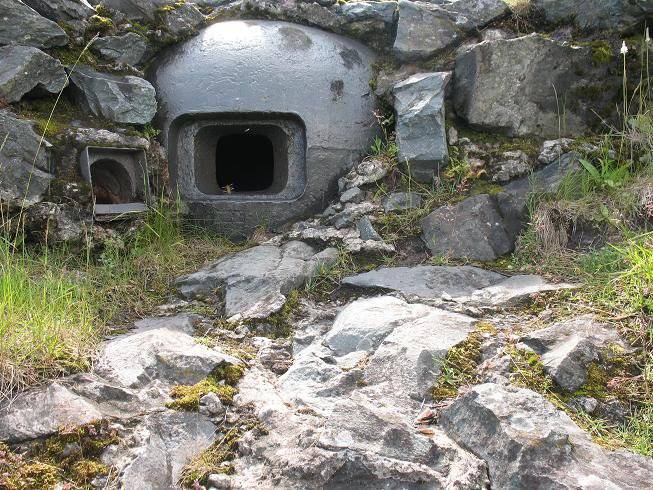
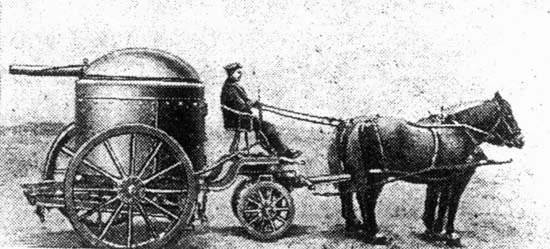
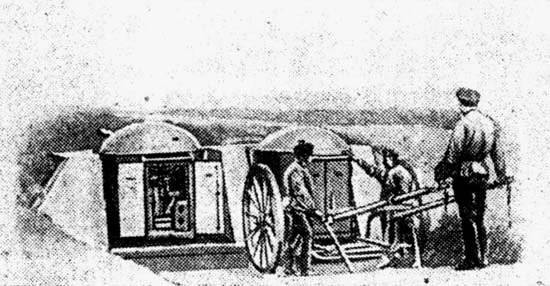
Perhaps this is the progenitor of the "Crab" - MG Panzernest.
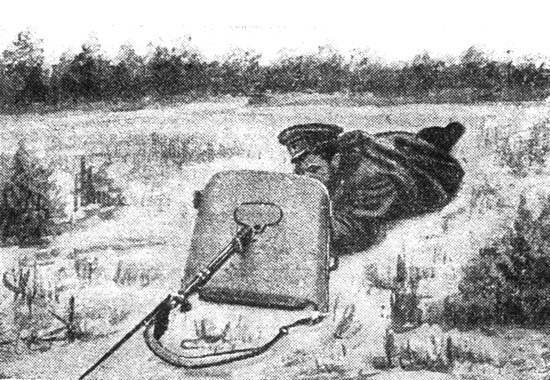
At that time there were a great many of them: rifle wearable, sapper, rolling, reinforced with armor visors.
They were created in France in 1916 and were widely used in the destruction of wire fences and. t. n.
When creating a review, materials from reports were used.
- Defensive Construction Offices;
- commissions established by order of the Chief of Engineers.
- Mikhail Zadunaysky
- http://rufort.info
- http://fortoved.ru, http://rufort.info, http://oldstory.info, http://www.histomil.com.
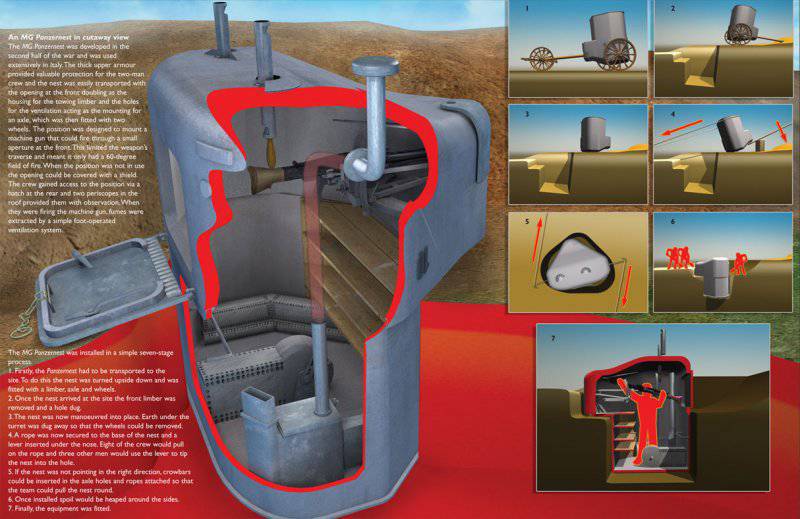
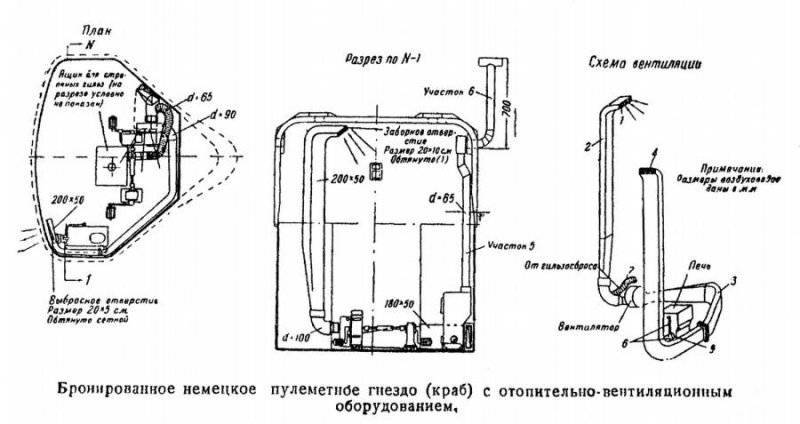
Information